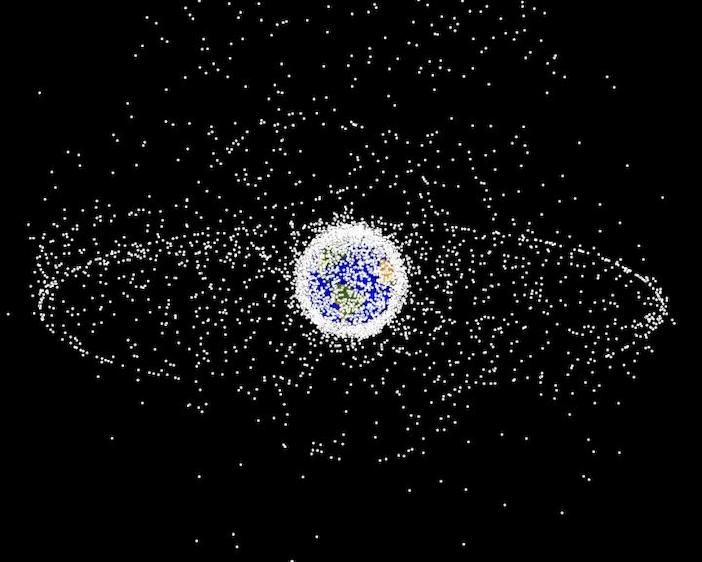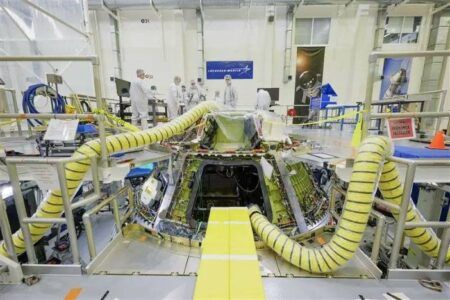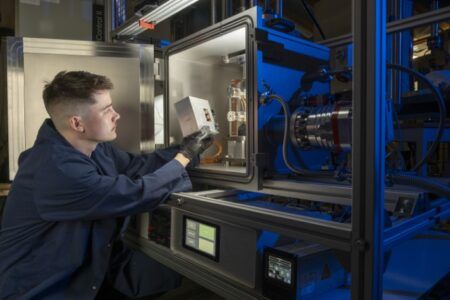A study published by US researchers has suggested that the most effective way to solve the space junk problem is an international agreement to charge operators “orbital-use fees” for every satellite put into orbit.
Currently, an estimated 20,000 objects, including satellites and space debris, are crowding low-Earth orbit.
Technological methods to removing space debris from orbit include the use of nets, harpoons, or lasers. Several projects are being run by space agencies around the world to develop such techonlogies, such as EASA’s RemoveDebris project.
However, according to researchers at the University of Colorado at Boulder, the introduction of orbital use fees would provide an incentive to satellite developers and operators to consider the entire lifecycle of their equipment and increase the long-run value of the space industry.
By reducing future satellite and debris collision risk, an annual fee rising to about US$235,000 per satellite would quadruple the value of the satellite industry by 2040, he and his colleagues concluded in a paper published this week in the Proceedings of the National Academy of Sciences.
Economist Matthew Burgess, co-author of the paper, assistant professor in Environmental Studies and an affiliated faculty member in Economics at the University of Colorado Boulder said, “Space is a common resource, but companies aren’t accounting for the cost their satellites impose on other operators when they decide whether or not to launch.
“We need a policy that lets satellite operators directly factor in the costs their launches impose on other operators.”
The researcher believe that each operator will launch more satellites until their private collision risk equals the value of the orbiting satellite. Engineering or managerial solutions to space debris might motivate operators to launch more satellites, further crowding low-Earth orbit, increasing collision risk and raising costs.
Akhil Rao, assistant professor of economics at Middlebury College in Vermont, USA and the paper’s lead author said, “This is an incentive problem more than an engineering problem. What’s key is getting the incentives right.”
A better approach to the space debris problem, Rao and his colleagues found, is to implement an orbital-use fee, a tax on orbiting satellites. “That’s not the same as a launch fee,” he said, “Launch fees by themselves can’t induce operators to deorbit their satellites when necessary and it’s not the launch but the orbiting satellite that causes the damage.”
Orbital-use fees could be straight-up fees or tradeable permits, and they could also be orbit-specific, since satellites in different orbits produce varying collision risks. Most important, the fee for each satellite would be calculated to reflect the cost to the industry of putting another satellite into orbit, including projected current and future costs of additional collision risk and space debris production–costs operators don’t currently factor into their launches.
“In our model, what matters is that satellite operators are paying the cost of the collision risk imposed on other operators,” said Daniel Kaffine, professor of economics at the University of Colorado Boulder and co-author on the paper.
Fees would increase over time to account for the rising value of cleaner orbits. In the researchers’ model, the optimal fee would rise at a rate of 14% per year, reaching roughly US$235,000 per satellite year by 2040.
For an orbital-use fee approach to work, the researchers found, all countries launching satellites would need to participate–that’s about a dozen that launch satellites on their own launch vehicles and more than 30 that own satellites. In addition, each country would need to charge the same fee per unit of collision risk for each satellite that goes into orbit, although each country could collect revenue separately. Countries use similar approaches already in carbon taxes and fisheries management.
In this study, Rao and his colleagues compared orbital-use fees to business as usual and to technological fixes such as removing space debris. They found that orbital use fees forced operators to directly weigh the expected lifetime value of their satellites against the cost to industry of putting another satellite into orbit and creating additional risk. In other scenarios, operators still had incentive to race into space, hoping to extract some value before it got too crowded.
With orbital-use fees, the long-run value of the satellite industry would increase from around US$600 billion under the business-as-usual scenario to around US$3 trillion, researchers found. The increase in value comes from reducing collisions and collision-related costs, such as launching replacement satellites.





